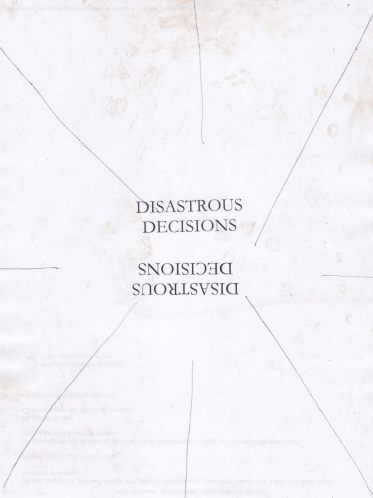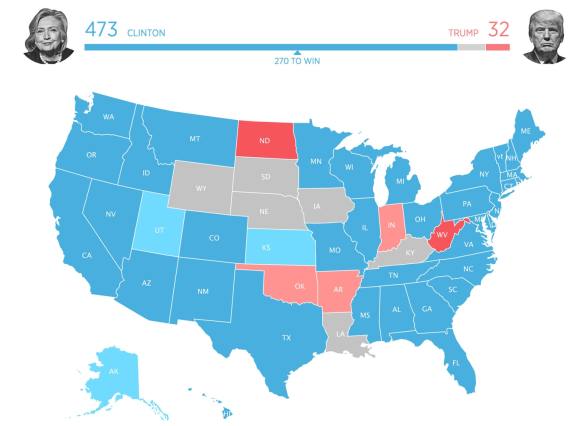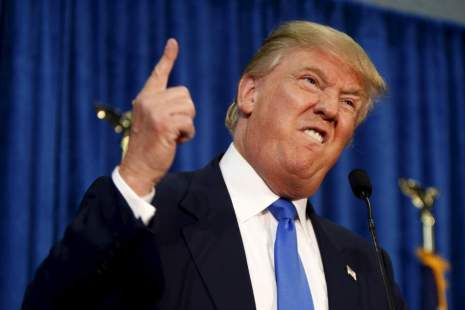
Motelism, 2012
It has been a week since the U.S elections resulted in a (relatively narrow) win for Donald Trump. In the 7 days since, media coverage has addressed every possible angle of his win, from why the result was a shock, to powerful writing by Gary Younge on the soul-searching needed to understand the crisis facing middle America.
Less has been written about the electoral system, in part perhaps because the election has its result now, and America’s political future is more pressing a concern than its demographic patterns. But looking at the voting patterns is fascinating, because it shows not just that the Midwest and rural areas are more conservative and cities and coastal communities are more liberal (this has long been true), but that Trump managed to win voters over in states that were previously Democrat including Wisconsin and Pennsylvania, as well as industrial swing states that voted for Obama a mere cycle ago including Ohio and Michigan. Meanwhile, ‘millennials’ – young adults aged 18-25 – voted in the majority for Hillary Clinton. The map below has been shared all over social media, and whilst it isn’t quite accurate because it is based on voting intention rather than outcome, it does give hope that younger voters will hold the power in the next election cycle.

We should remember, too, that in a system similar to the UK electoral process, the American election system isn’t the most representative option. Clinton did win the majority of popular votes, at 61.9 million to Trump’s 60.9 million. But this makes no difference because, as in the UK, votes are allocated to wards, boroughs and states, with each unit electing a representative (similar to our MPs). This is only the second time in a century that a losing president has gained the majority of popular votes. The fact that this win doesn’t mean being actually elected suggests proportional representation deserves consideration as a voting system, which you can read more about at the Electoral Reform Society. As you can see, it is rational and highly representative, which makes it all the more depressing that so few Western countries use it, favouring instead arcane and complicated electoral systems seemed designed to confuse the electorate. We did get a referendum on introducing Alternative Voting instead of our existing first-past-the-post system in the UK in 2011, but – surprise! – it didn’t go through. Many polls suggested at the time that the proposed system wasn’t fully understood by voters.
The mood for many feels very post-Brexit, with uncertainty about the extent to which Trump will roll out policies that even his own party deemed unpalatable in the election run-up. If we accept that the U.S election, like Brexit, shows that we are in a post-fact democracy (ie. promises made to win over voters which are not true and will not happen, for example allocating £350 million to the NHS) then at least some of the more extreme ideas Trump came up with in his election campaign will be neutered or quietly killed off. We can but hope. Such hope seems a bit futile when Trump has already chosen Stephen Bannon as his chief strategist. For the unitiated, Bannon is a white nationalist who allegedly doesn’t like his children mixing with jewish children.

These are significant political appointments, and we should make every effort to scrutinise these early movements because they signal what a Trump presidency could look like. In case you missed it, this excellent piece shows how historical disasters like facist rule or world war are not precipitated by obvious errors or avoidable turning points, but tiny, incremental shifts in attitude and judgment that fringe political leaders capitalise on to nudge the public into more and more extreme views. It’s chilling. What struck me is he wrote it before Trump was even elected. He voices my worries exactly when he warns that the election in France of Marie Le Pen, which most of us once thought unimaginable, is a real possibility next year. In case you’re not up to speed on Le Pen, she is a fascist rebranded as alt-right. Think UKIP on acid. Front National is a tempting option for many French citizens anxious about terrorism and conditioned to conflate religious extremism with Muslims and migrants; the FN party scored 28% of the popular vote in 2015 regional elections.
We can reason all we want about how to think rationally about emotive topics like these, but human nature is very subjective. People think what they think based on an incredibly narrow field of vision made up of their experiences, the people around them, and the media they consume. Not only is it hard to get people to consider different angles to an issue (and I include everyone in that stubbornness, not just closet racists), it’s even harder to do so when people don’t voice their honest, often ugly opinions for fear of being ridiculed for them. It’s pretty baffling to think that people to some extent know that their views are informed by prejudice rather than rational thought because of the outcry voicing those thoughts would provoke. But it’s more worrying still to realise that because of this sense of holding back in public, voting predictions, common consensus and opinion polls all end up shockingly inaccurate because ‘silent voters’ voice their opinions in the anonymity of the ballot box. Hence Brexit, hence Trump.
Finally, the argument that the best way to expose facist beliefs is to hold them up to public scrutiny is – I hope – dying on its arse. BNP leader Nick Griffin getting a platform to peddle hateful rhetoric was not a huge risk – not one of life’s naturals in debate, he famously floundered on BBC’s Question Time in 2009 (it even has its own Wikipedia entry). But Marie Le Pen is a different kettle of poisson. This astute Vice article points out she is a PR master. She manages to control the stage in any interview, the bigger the better: I’m looking at you, BBC. Giving her airtime doesn’t expose her ugliness to the world, it allows her a platform to edit and manipulate her views in order to seem temporarily human. Unfortunately, holding fascism ‘up to the light’ often gives it the air it needs to prosper, not wither.
Farage as British envoy to Trump is just one other aspect of this new, depressing reality of fascism being given credible platform. Remember the good old days, when the man was just a punchline?
LikeLiked by 1 person
Yeah I know. The slavering media coverage of Farage is bizarre: he has no elected office! Have the media forgotten he resigned from UKIP?
LikeLike
Whether one likes him or loathes him, Nigel Farage does have an elected office– he is a UKIP MEP for South East England. He is still with the party by the way; he resigned the leadership of the party, rather the party itself.
LikeLike
Proportional representation is indeed mathematically fair. However a reason that many parliamentary democracies decline to use it, is that it takes away the idea of a (wo)man representing a voter at parliament. MPs are solely representing their parties, and are lobby fodder (Another reason is it greatly increases the ‘risk’ of co-alition governments, for better or worse)
The best voting system I’ve come across, is mixed-member proprotional (MMP), used in New Zealand and Wales for instance. Half of the members are constituency MPs, elected via first-past-the-post– the other half are elected via party lists (PR).
So with MMP you still get a (wo)man representing one’s town. However there is also proportionality too, so it’s fair in that respect.
Alternative Vote is a complicated system, but it’s my observation that AV was rejected because many recognised it’s less proportional than FPTP and the vagaries of the system can result less popular candidates winning
LikeLiked by 1 person
That was a really interesting comment, thanks David. I knew about the increase in coalition governments (and I’m ok with that, in fact I think if repeated more often than just the 2010 version then the structure would become clearer and more streamlined), but I hadn’t thought of it in terms of the idea of a vote representing a parliamentary member. MMP sounds like a reasonable compromise, will take a closer look at that.
Sam
LikeLiked by 1 person
Fair enough. With regards to “in terms of the idea of a vote representing a parliamentary member”, my point was that you have somebody representing your area in parliament: Thus somebody you can lobby, have a surgery with and can raise issues you have in parliament.
With MMP you still have that with half of the members; to ensure the fairness, the other half are proportionally voted in via party-lists.
Another advantage of MMP is each voter gets two votes. So if you think Joe Bloggs has been a great MP for your area, but dislike his party; then you can still vote for him with your first vote (the FPTP option), but then chose your favourite party with your second vote (on the PR option).
Of course the reverse maybe true as well; you normally vote for Party Z, but can’t stand the local candidate for Z. So with your FPTP vote you select a more suitable person to represent your town in parliament, but vote for Party Z on the PR list.
LikeLike
top blog, respect…please spell ‘fascist’ right though mate, dont give these dickheads any ammo…
LikeLike
Good spot! Corrected. And thanks for reading, Harry.
Sam
LikeLike
Pingback: Art as resistance in the age of unrest | sexuality and the city